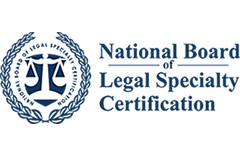New Statistics on Diagnostic Errors
A recent article in CNN Health highlights new statistics on diagnostic errors in the United States. The impact of a misdiagnosis or a delayed diagnosis can be catastrophic for patients, sometimes leading to irreversible damage or even loss of life.
These recent estimations on the rate of diagnostic error in the U.S. reveal a distressing trend: an estimated 750,000 deaths and permanent disabilities each year can be attributed to these mistakes. To put it in perspective, that’s more than twice the population of Miami facing dire consequences annually.
As Florida medical malpractice lawyers, we are deeply concerned about these new statistics on diagnostic errors. Countless patients place their trust in the hands of medical professionals, expecting accurate and timely diagnoses.
With such staggering statistics on diagnostic errors, it’s evident that systemic change is not just necessary but urgent. If you or a loved one have suffered due to a diagnostic error, call Colling Gilbert Wright at (407) 712-7300 for a FREE case evaluation.
What Are Diagnostic Errors?
Diagnostic error refers to instances when a diagnosis is missed, wrong, or delayed. Such mistakes can occur for various reasons, including inconclusive patient symptoms, inadequate medical history evaluations, misinterpretation of diagnostic tests, or a physician’s oversight.
According to a study from Johns Hopkins Medicine, diagnostic errors contribute significantly to patient harm and can lead to inappropriate treatment or delays in treatment. David E. Newman-Toker, M.D., Ph.D. claims, “…diagnostic errors could easily be the biggest patient safety and medical malpractice problem in the United States.”
Diagnostic errors are a critical issue in healthcare. As long as the problem exists, there will remain a need for better strategies to reduce their occurrence. Addressing these errors is pivotal in ensuring patient safety and improving the overall quality of medical care. Otherwise, the need will continue to grow for medical malpractice lawyers to pursue justice for affected clients and their families.
Read More: Is a Missed Diagnosis Considered Medical Malpractice?
Statistics on Diagnostic Error
According to the CNN Health article, the misdiagnosis of certain medical conditions and diseases leads to an estimated 371,000 deaths and 424,000 permanent disabilities each year. Diagnostic errors primarily occur when severe illnesses or conditions go undetected due to subtle or easily overlooked symptoms. At times, they can also result from administering inappropriate or unwarranted treatments for conditions the patient isn’t afflicted with.
The study, published in BMJ Journals, warns that “Diagnostic errors cause substantial preventable harms worldwide.” Yet, around half of these errors occur in relation to only 15 diseases. That implies that a solution to this problem could be attainable.
In the meantime, the authors of the study encourage us not to lose faith in the healthcare system. There is a less than 0.1% chance of suffering serious harm due to a diagnostic error after a visit with your healthcare provider. However, even one life lost due to a preventable error is too many.
What Are the Most Impactful Misdiagnosed Conditions & Their Symptoms?
The estimated statistics on diagnostic error tell us that 38.7% (BMJ Journals) of serious harms are due to mistakes in diagnosing these 5 conditions: stroke, sepsis, pneumonia, venous thromboembolism (blood clot in a vein), and lung cancer.
Though these are not the most frequently misdiagnosed conditions, due to how common they are, how often they are misdiagnosed, and the severity of the harm they can cause, they have the largest impact. Understanding this can help in developing strategies to address the reasons these conditions are so often misdiagnosed and establish safeguards to help prevent future incidences.
Common symptoms of these often misdiagnosed conditions are:
Stroke
- Sudden numbness or weakness in the face, arm, or leg, especially on one side
- Confusion
- Trouble speaking or understanding
- Blurred vision
- Dizziness
- Loss of balance
- Severe headache without a known cause
Sepsis
- Fever & chills
- Rapid breathing & heart rate
- Confusion or disorientation
- Extreme pain or discomfort
- Shortness of breath
- High or low body temperature
- Reduced urine output
- Pale or mottled skin.
Pneumonia
- Cough with phlegm
- Fever & chills
- Chest pain when breathing or coughing
- Shortness of breath
- Fatigue
- Muscle aches.
Venous Thromboembolism
- Swelling, pain or tenderness, reddish or bluish skin discoloration, and warmth in the affected limb
- Shortness of breath, chest pain, or coughing up blood may indicate a pulmonary embolism
Lung Cancer
- Persistent cough
- Chest pain
- Shortness of breath
- Hoarseness
- Bloody sputum
- Weight loss
- Fatigue
- Recurrent respiratory infections
Seek medical attention swiftly if experiencing any of these symptoms.
What Can Be Done About the Frequency of Diagnostic Errors?
The only way to change the trajectory of diagnostic errors is to admit there is an issue and focus time, money, and study on correcting the problem. When medical practitioners and establishments don’t want to admit mistakes, this throws a wrench in necessary progress.
After establishing a problem, funds can be put into researching the cause of the issue and possible solutions. Then, training can be provided to reduce the number of misdiagnosed cases. This process was previously used to address the once-frequent misdiagnosis of heart attacks, which also tend to have vague warning signs. Now, heart attacks are diagnosed with a less than 2% error rate (CNN Health).
Steps You Can Take To Help Protect Yourself
One of the main issues affecting diagnostic error is how disconnected the different branches of our healthcare system can be. General practitioners are separated from specialists, and people are switching doctors as their insurance coverages change—the lack of communication can lead to vital information slipping through the cracks.
Here are some steps to help you take control of your own diagnostic journey:
- Keep detailed personal medical records
- Medical history
- Relevant conditions
- Test results
- Medications
- Follow up with providers
- Ask questions
- What could be causing my problem?
- What else could it be?
- When will I get my test results, and what should I do to follow up?
- Get care as soon as symptoms arise
When To Call a Medical Malpractice Attorney
The estimated statistics on diagnostic errors are a bit shocking. Even when you know how to advocate for your own health, you must put your well-being and that of your family in the hands of medical practitioners. When they fail to diagnose or misdiagnose a severe illness or condition, the results can be devastating for you and the ones you love.
In that unfortunate situation, the dedicated medical malpractice attorneys at Colling Gilbert Wright are here to support you. Diagnostic errors can lead to debilitating illnesses and wrongful death, leaving victims overwhelmed and emotionally and financially drained. We can take over as advocates for your rights, pursuing just compensation for your terrible losses.
Read More: Can I Sue a Doctor for Negligence?
Contact Colling Gilbert Wright today for a FREE case evaluation. We will investigate your claim and determine how best to pursue appropriate compensation. We proudly serve clients in Orlando, throughout Florida, and across the U.S.

 (407) 712-7300
(407) 712-7300
































